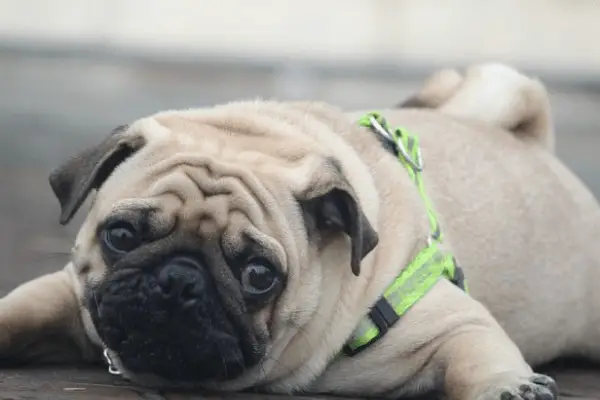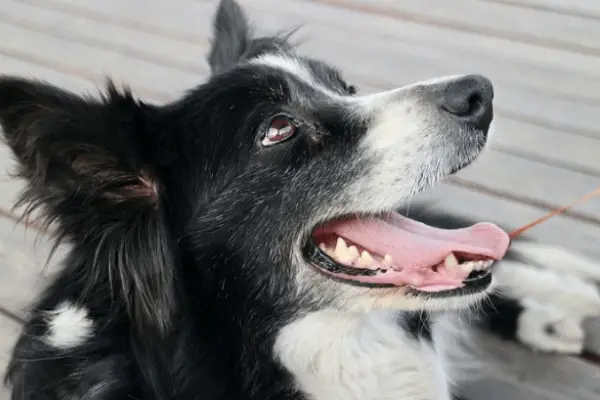Why Pugs Are The Worst (13 Reasons Explained)

As cute as pugs are, they have their downside, so let’s discuss why pugs are the worst to get.
There are so many reasons why you shouldn’t get a pug which I will outline and discuss some of the most common reasons.
Don’t mix things up, pugs are still a good breed to own, but it’s important you know some dark side and what you should expect.
I will try to keep things as simple and short as I can so keep reading…
Why Pugs Are The Worst
The most prevalent reasons why pugs are the worst breed to keep include begging, excessive farting, nonstop snoring, separation anxiety, clinging behavior, dominance difficulties, and heat exhaustion.
All these and being prone to some health challenges associated with pugs are the reasons why you shouldn’t get a pug if you are not in for it.
Let’s now break down these reasons for better understanding…
Why you shouldn’t get a pug
Here are some of the most common reasons why you shouldn’t get a pug:
1. Pugs are known for snoring excessively
Excessive snoring is one of the major reasons why you shouldn’t get a pug if you can deal with a loud snore.
The shape of their nose and size makes it a little difficult for pugs to take in enough air.
This inability to take in enough air can lead to snoring which can be a problem for most people.
However, because of their good personalities people tend to ignore the snoring or get used to their snoring.
Therefore, if you are not ready to deal with hearing your pup snore while you sleep then the pug is not for you.
2. Farting is a hubby for pugs
Pugs are not to fart a lot, the smell you get is often dependent on what you feed your pug.
Pugs wouldn’t mind farting on your face while you are sleeping, and this can be a problem for some people.
To fix the issue of farting, you can take your pug to a veterinarian so as t recommend special food, which can increase the cost of living.
When you don’t feed your pug the right food, and he farts, it is normally terrible because your pug may not have control of when to fart.
3. Pugs are known for their begging behavior
It may be difficult for the owner to ignore the pug’s enticing face, which promotes begging.
Despite the fact that begging is bad behavior, many pug owners reward their pets by feeding them as they eat.
Weight gain, gastrointestinal difficulties, and even persistent diarrhea are all possible side effects.
The simplest way to avoid this annoying behavior is to never encourage it in the first place.
Begging is also one of the top Pug behavioral issues associated with pugs.
4. Pugs are prone to overweight
You can easily find images of overweight pugs online, this is because pugs are really prone to overweight.
Most times pugs get overweight, which can be attributed to the fact that the owners don’t understand when or how to control their pup feeding.
Pugs can be lazy if you let them be, eating and sleeping are what they enjoy most, and this is the perfect recipe for overweight.
There are a few reasons why your pug may sleep excessively that can be fixed.
5. Pugs are prone to heat exhaustion
This is a big con for pugs, this means pugs are not for people who love to work out a lot or people who live in hot weather.
Again, the shape of their nose is a major reason why they are prone to heat exhaustion, this is because they can’t take in enough air.
This means you will always keep an eye on your pug’s indoor and outdoor activities to avoid overworking them.
Even though pugs are good with kids, they must be taught how to handle them and when to stop playing to avoid overheating or heat stroke.
6. Pugs are prone to separation anxiety
Pug separation anxiety is a behavior problem that develops when a pug is left alone for a prolonged amount of time.
It can progress to biting, excessive barking, and animosity if left untreated.
Separation anxiety in pugs manifests itself in biting, crying, barking, self-isolation, destructive chewing, and other behaviors.
When a pug is left alone at home, separation anxiety can develop, which can be reduced by having a buddy or practicing effective crate training.
To explain it in a simple sentence, if you have a 9 to 5 job then pugs are not for you unless you have someone else at home.
7. Difficulties in house-training
The act of teaching a dog to defecate outside or in a specified location within the house rather than following its natural propensity of pooping everywhere is known as housetraining.
Because of their domineering disposition, housebreaking a pug can be difficult. Expect to train in sessions for one to three months.
Even after you’ve accomplished potty training, your pug may make blunders. However, once you’ve finished it, you may expect to see a cute dog.
One of the most common difficulties with pug behavior is housebreaking. When you first obtain a pug, make an effort to focus on house training right away.
8. Pugs have dominance issues
These little pups always forget they are small, and they love to be the boss, sometimes when you call they pretend not to hear you.
Pugs have a reputation for being demanding and forgetting their size, which may be a serious issue if you have youngsters.
It’s vital to properly socialize your pug to avoid domineering behavior, and also invest time in obedience training.
Pug likes to take the lead while you follow, which may lead to a number of behavioral problems that, if left unaddressed, can lead to unneeded antagonism.
9. Pugs are known for clingy behavior
While some people find it annoying that their pugs follow them around the home asking for affection, others find it amusing.
When it comes to asking for attention by barking, biting, or nipping, pugs are no exception.
A pug is not for you if you don’t want a loving dog who requires constant attention.
Pugs are wonderful companion dogs that spend their days with their owners; nevertheless, if not properly managed, they may become a significant problem.
10. Pugs do have shedding issues
Yes, pugs shed all year, although they shed the most in the spring and fall, with the most shedding in the spring. As a result, pugs are regarded as a breed that sheds a lot.
While all dogs shed to some extent, it is a natural process that protects their skin and helps them regulate their body temperature.
Because pugs have a double coat, they shed more than most dogs.
Food, grooming, and vitamins can help to lessen excessive pug shedding, but it cannot be prevented.
11. Pug maintenance can be an issue
Pugs require a lot of attention. They necessitate more work to keep them in good condition.
Brushing and grooming are required on a regular basis to maintain the breed’s finest appearance.
They also require adequate general care. In addition, their nails develop faster than those of other dogs.
As a result, nail cutting is required more frequently. You’ll also need to clean their ears to keep them from getting an ear infection.
12. Pugs have health issues
They are susceptible to a variety of respiratory infections due to their small snout and squeezed nose.
Their bodily structure frequently causes dogs to have respiratory difficulties. They are also more susceptible to a variety of health problems.
Hip dysplasia, eye illnesses, respiratory problems, and other ailments might make your pug sick.
All of these health conditions will set you back a fortune. Your pug’s health will cost a lot of money.
13. Pugs can develop jealousy
The first and most important thing to know about a Pug dog’s disposition is that they are naturally affectionate. They also adore showering affection on others.
The Pug is a very intellectual dog as well so it also tends to be emotionally sensitive.
This indicates that your Pug’s feelings might be easily damaged.
Although you may find your Pug’s jealousy amusing, it is a serious problem that should not be overlooked.
Frequently Asked Questions
Are pugs really the worst?
Well, it really depends on your perspective. While some people adore pugs and find their unique features endearing, others may not be as fond of them. It’s all a matter of personal preference!
What makes pugs the worst breed of dog?
Pugs have certain characteristics that some people may find challenging. They are prone to health issues, such as breathing problems and eye infections. Additionally, their snorting and snoring can be quite loud, which might not be everyone’s cup of tea.
Are pugs difficult to train?
Pugs can be a bit stubborn when it comes to training. Their independent nature can make them less responsive to commands compared to other breeds. However, with patience, consistency, and positive reinforcement, they can still be trained successfully.
Do pugs require a lot of care?
Pugs do require regular grooming to keep their coats healthy, and their facial wrinkles need to be cleaned regularly to prevent skin infections. They are also prone to obesity, so maintaining a balanced diet and providing regular exercise is crucial for their well-being.
Are pugs good with children?
Pugs can be great companions for children due to their playful and affectionate nature. However, their small size and fragile nature mean that they should always be supervised when interacting with young children to avoid accidental injuries.
Do pugs have any redeeming qualities?
Absolutely! Pugs are known for their friendly and loving personalities. They make excellent lap dogs and are always up for snuggles. Their adorable wrinkled faces and expressive eyes can melt even the coldest hearts. It’s all about finding the right match for your lifestyle and preferences!
Conclusion
In conclusion, while Pugs may not be everyone’s cup of tea, they certainly have a unique charm that can’t be denied.
From their adorable wrinkly faces to their playful personalities, Pugs bring joy and laughter to many households.
So, let’s embrace the quirks and celebrate these lovable little dogs for all the happiness they bring into our lives.
I hope your question Why Pugs Are The Worst was answered with the information provided on this page.



![Why Does My Dog Lick My Hands So Much [12 Reasons] Why Does My Dog Lick My Hands So Much](https://petcreeks.com/wp-content/uploads/2023/10/pexels-matheus-bertelli-2376996.jpg)


